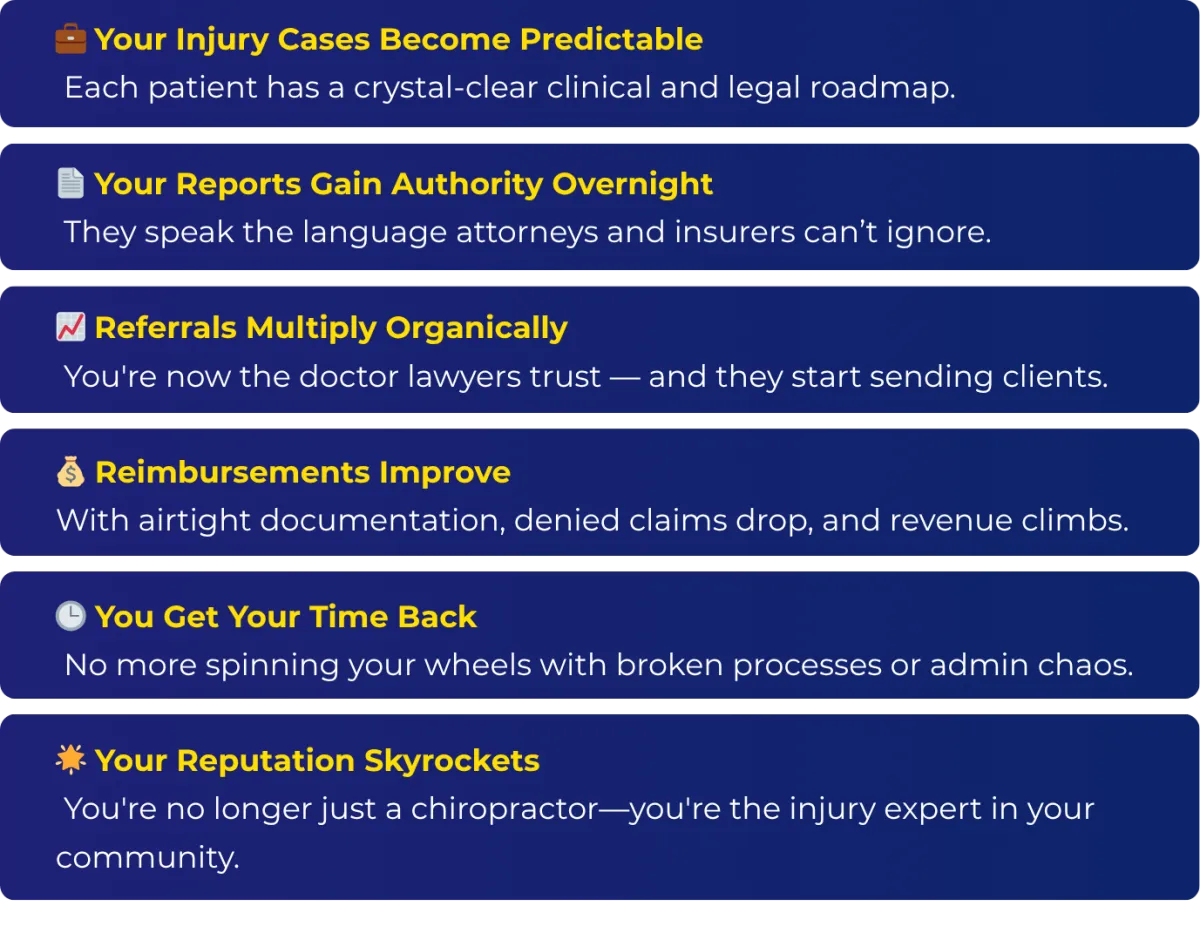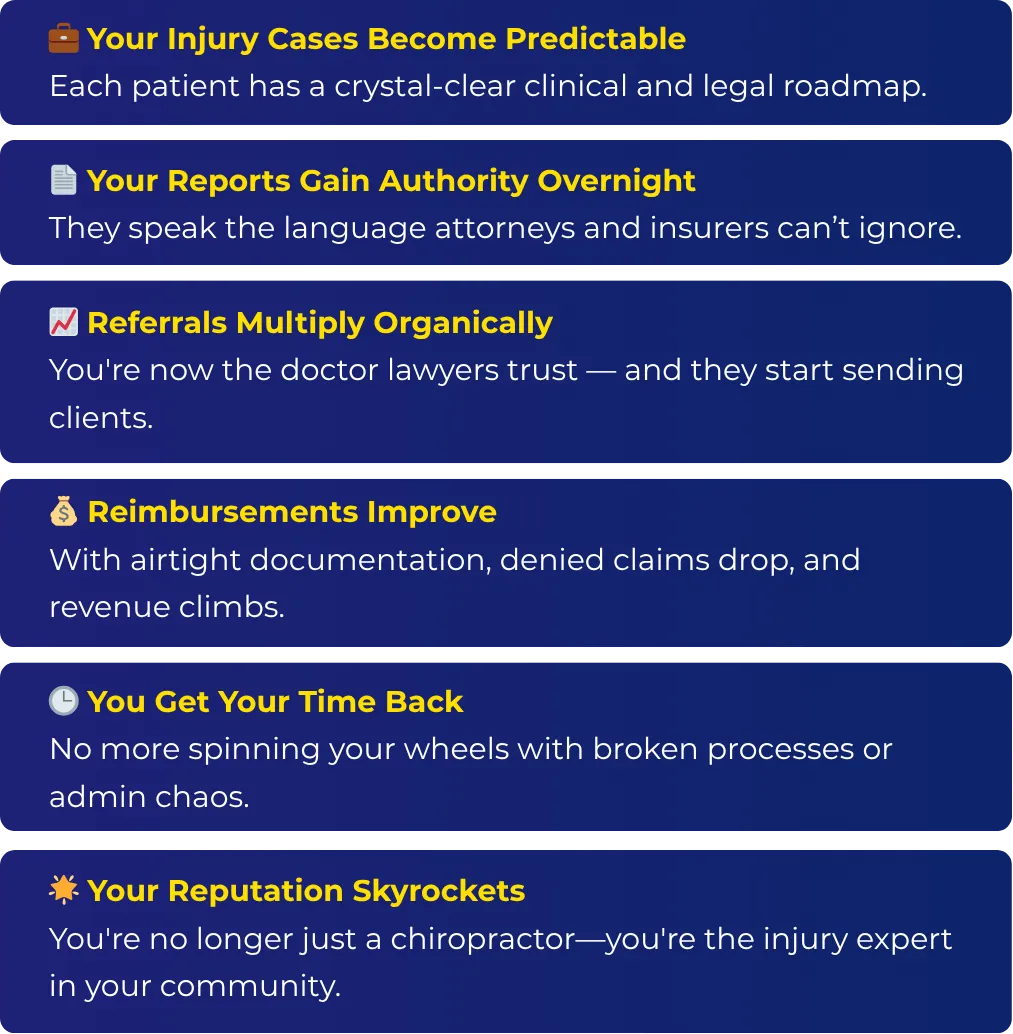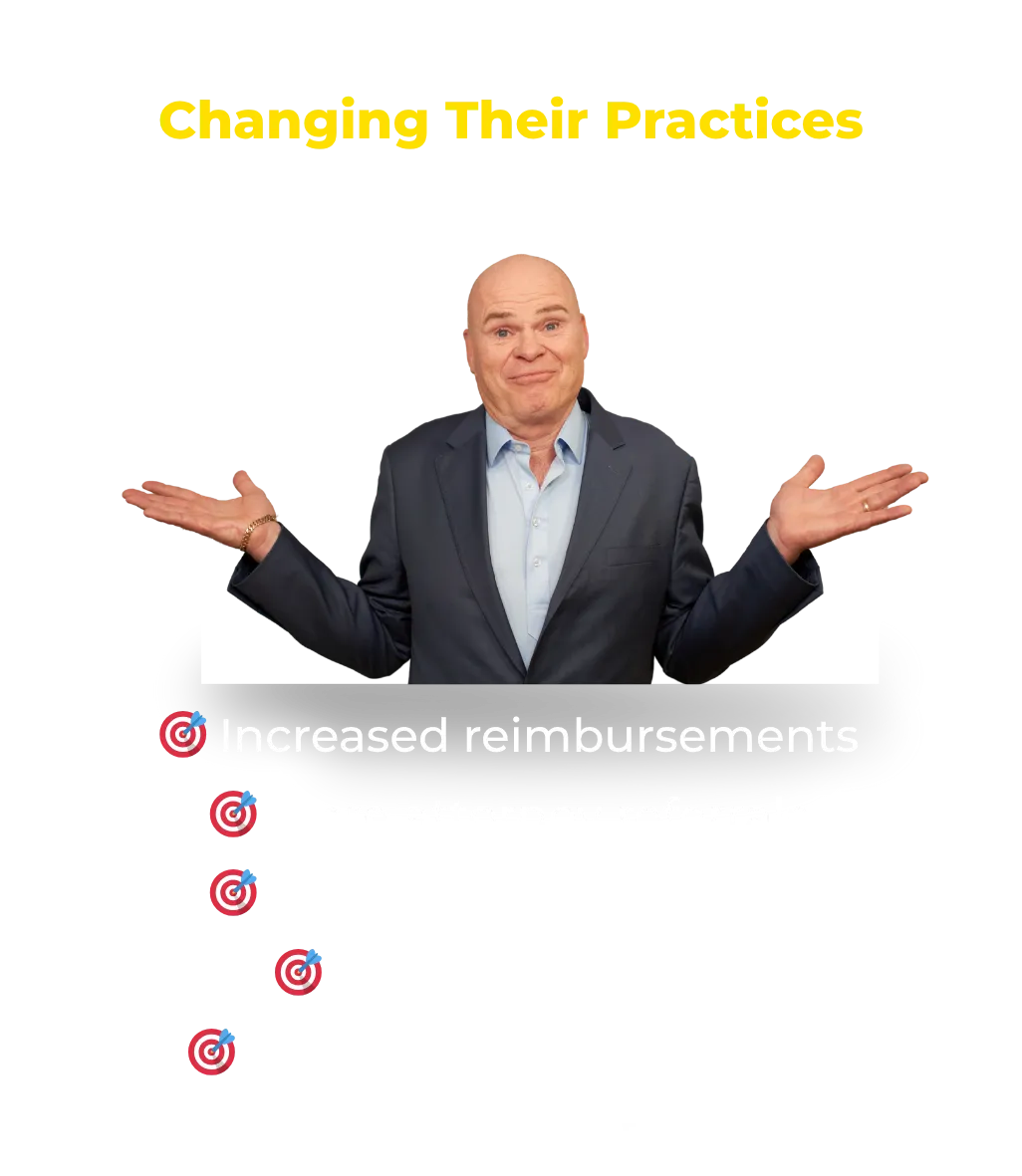Build Your PI Practice Your Way.
SmartInjury®Doctors offers a complete system for long-term success, or mini courses to solve key problems fast. Start small or go all in.
Here's how we help either way.
Ready to Attract Better Cases, Work Smarter, and Grow with Confidence?
This is the next big thing in your personal injury career.
You Know How to Treat Injuries,
So Why Is It Still This Frustrating?
You Know How to Treat Injuries, So Why Is It Still This Frustrating?

Every day you work hard to help your patients, but without the right system behind you, you're losing time, missing revenue, and staying invisible to the very people who could be sending you referrals.
If you're like most chiropractors in personal injury, you've probably spent years doing your best… but never actually learning how to do it right.
And it’s costing you...
Tens of thousands in missed reimbursements.
Hours wasted on trial-and-error processes.
A reputation that never quite lands you on the attorney referral list.


It simplifies injury work so you can finally earn more, help more, and build the kind of reputation your clinical skills deserve.
"The information provided is not 'A' game changer... it is 'THE' game changer for our profession... a step towards ethical, unbiased, patient-centered care that leads to better outcomes." ~ A.T., DC

You’ve Already Invested 60,000 Hours in Your Career,
Let’s Make Everyone Count


That’s not your fault—but it’s also not a strategy for long-term success.


To give you the exact system that removes the guesswork and replaces it with clarity, control, and confidence.
A Proven System. Built by a Doctor.
Refined Over 30 Years. Trusted Nationwide.
A Proven System. Built by a Doctor. Refined Over 30 Years. Trusted Nationwide.
Dr. Jeffrey Cronk didn’t just treat spinal injuries; he built the system that thousands of chiropractors now use to diagnose, document, and dominate in injury care.


Used in injury clinics across the U.S.
Backed by attorneys, radiologists, and top PI professionals.
Designed for chiropractors who are done playing small.
This is the next big thing in your personal injury career.
What Happens When You Stop Guessing…
and Start Owning Injury Work?
When doctors plug into the SmartInjury®Doctors System,
everything changes:


You didn’t become a doctor to feel stuck, overworked, or overlooked.
This system turns injury work into your most powerful profit and impact engine.



...and many more!

This Isn’t a Course. It’s a Career Upgrade.
This Isn’t a Course.
It’s a Career Upgrade.
👉 Ready to stop guessing and start winning in personal injury?
👉 Want to be the doctor attorneys refer to—and courts trust?
and discover how SmartInjury®Doctors can transform
your practice—in weeks, not years.
and discover how SmartInjury®Doctors can transform your practice—in weeks, not years.
This is the next big thing in your personal injury career.
Disclaimer: The SmartInjuryDoctors® program is designed for educational purposes only, with the goal of helping doctors reach their full professional potential. While the strategies and systems taught in this program have been tested, refined, and proven effective by many doctors, individual results may vary. Success depends entirely on how the material is applied within each doctor’s unique practice, context, and commitment. We do not guarantee specific outcomes—but we do provide the tools, training, and support to help you maximize your results.
© 2025 SmartInjuryDoctors All Rights Reserved.
Privacy Policy & Terms and Conditions





